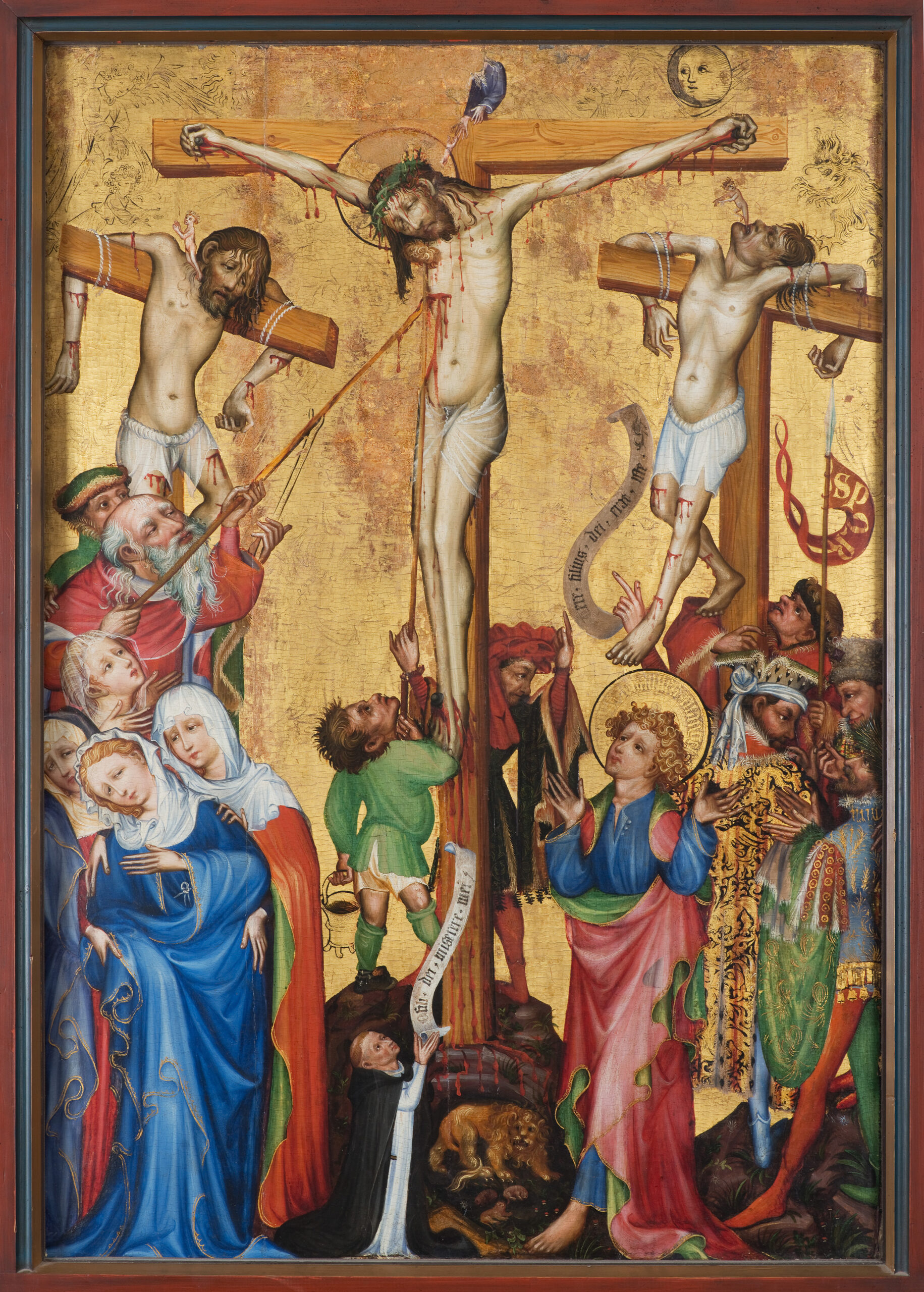Considered as the earliest surviving easel painting from the Upper Rhine region, Hermann Schadeberg’s Crucifixionpainted on wood is above all representative of the international Gothic style, with its iridescent colours capturing the brilliance of precious metals, its gold background with stamped motifs, a preciosity of effect approaching in detail that of illuminated manuscripts, and its elongation of the human form.
In the traditional manner, the composition is centred on Christ nailed to the cross, willingly giving up His soul into God’s hands, in the form of a young child. On either side of the cross, the group consisting of the Virgin Mary and the holy women is balanced by that including Saint John on the right. Above the latter, a centurion holds a scroll on which is inscribed in Latin the phrase “Truly this man was the Son of God”. At the foot of the cross, a Dominican friar, certainly the party commissioning this work, prays for his own resurrection. The figure of the lion attempting to breathe life into his little still-born cubs conveys the same aspiration.
The recent exhibition highlighting artistic creation in Strasbourg around 1400 advocated a new attribution for this painting, revealing it as a work by the Strasbourg painter Hermann Schadeberg, who is also credited with designs for stained-glass Windows.
- Référence Oil on wood (pine)
- Artiste Strasbourg painter, perhaps Hermann Schadeberg (active between 1399 and 1427)
- Année Between 1410 and 1415
- Dimensions H. 126 cm ; l. 87 cm ; ép. 1,7 cm
- Statut Revolutionary entry
